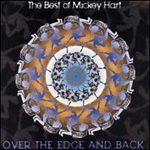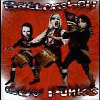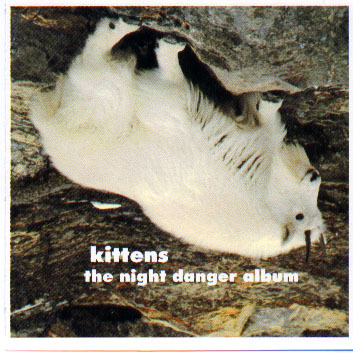Who will cut their hair when they’re gone?Montreal’s one-horned wonders The Unicorns pour on the sugar & spice |
Preview~ THE UNICORNS |
MacEwan Hall About to embark on his second cross-country tour, a bright-eyed and bushy-tailed Alden Ginger views his musical horizons with an air of confidence. He and high school buddy Nicholas "Niel" Diamonds have made quite a name for themselves – The Unicorns. And yes, their musical style is every bit as silly and self-indulgent as the name implies.
Obviously, fear of being ostracized by their peers has never factored highly in The Unicorns’ list of concerns. More likely, these awkward oddballs of electronic delight take pride in their non-conformist ways. Seeking to crawl under the skin of anyone who will listen, The Unicorns are spinning a cotton-candy web big enough to entangle our entire nation.
"The Unicorns started when I was in high school, which is not so long ago," says Ginger, the budding guitar hero. Ginger and guitarist-singer Diamond spent some time living out on the West Coast. Their drummer Jamie Thompson lived in Guelph, but now their home base is in Montreal which is where they started to get serious about music.
Not pulling any punches, The Unicorns’ debut release Who Will Cut Our Hair When We’re Gone? comes fully decorated with rainbows and clouds, the song titles spelled out in toothpaste across a hot fuchsia background. The childlike simplicity of songs like "Ghost Mountain" and "Jelly Bones" further purvey their genuinely innocent view of the universe with Ginger’s devastatingly stylish guitar riffs breaking up the high-pitched wonkiness of this teddy bear’s picnic on acid.
"We have a lot of different ideas about music." says Ginger of his. "We have very divergent personalities. I play some of the rockier music that’s more guitar-oriented. I come from a punk background, but I’ve never considered myself as part of the punk scene, specifically. I don’t like the guitar rock, but for some reason I just have to do it," he says chuckling.
"I hate it when bands claim that they have something for everyone, but I guess that in our case it’s true. That’s all part of the dialogue between Nick and I – working on a bridge between our two different musical backgrounds. That’s where the contrast comes from, as we try to find some middle ground."
Touring as the opening act for Soft Canyon has definitely left an indelible mark on The Unicorns, according to Ginger. Soft Canyon’s ability to blend old and new sounds together has become their alchemical roadmap to unfettered creativity and most importantly fun. You could also try to compare the Unicorns to Cake and Ween, but when those connections ultimately implode, it all boils down to the beat (as the Go-Gos might say). This beat that drives them, according to Ginger, is the ultimate battlefield upon which The Unicorns’ never-ending civil war will be waged.
"Sometimes we fight onstage. We try to dance. We physically battle each other – it’s easy to get carried away. We’re quite emotional about our songs, and sometimes that emotion translates itself into anger."
The Unicorns also explore the other side of the emotional coin.
"We’ve also done puppet shows to our music. We like to entertain, and we like to wear lots of pink. I think pink is a great colour," Ginger elaborates.
"The nature of our live performances fluctuates quite a bit, because we have a lot of songs with varying degrees of energy in them. So, we wind up switching instruments and decibel levels often. It doesn’t always have to be loud to be good. Some people don’t like it when we play our ‘lighter’ stuff…. Fuck ’em!"
by Christine Leonard
Originally published in FastForward Magazine
Friday, November 21, 2003





